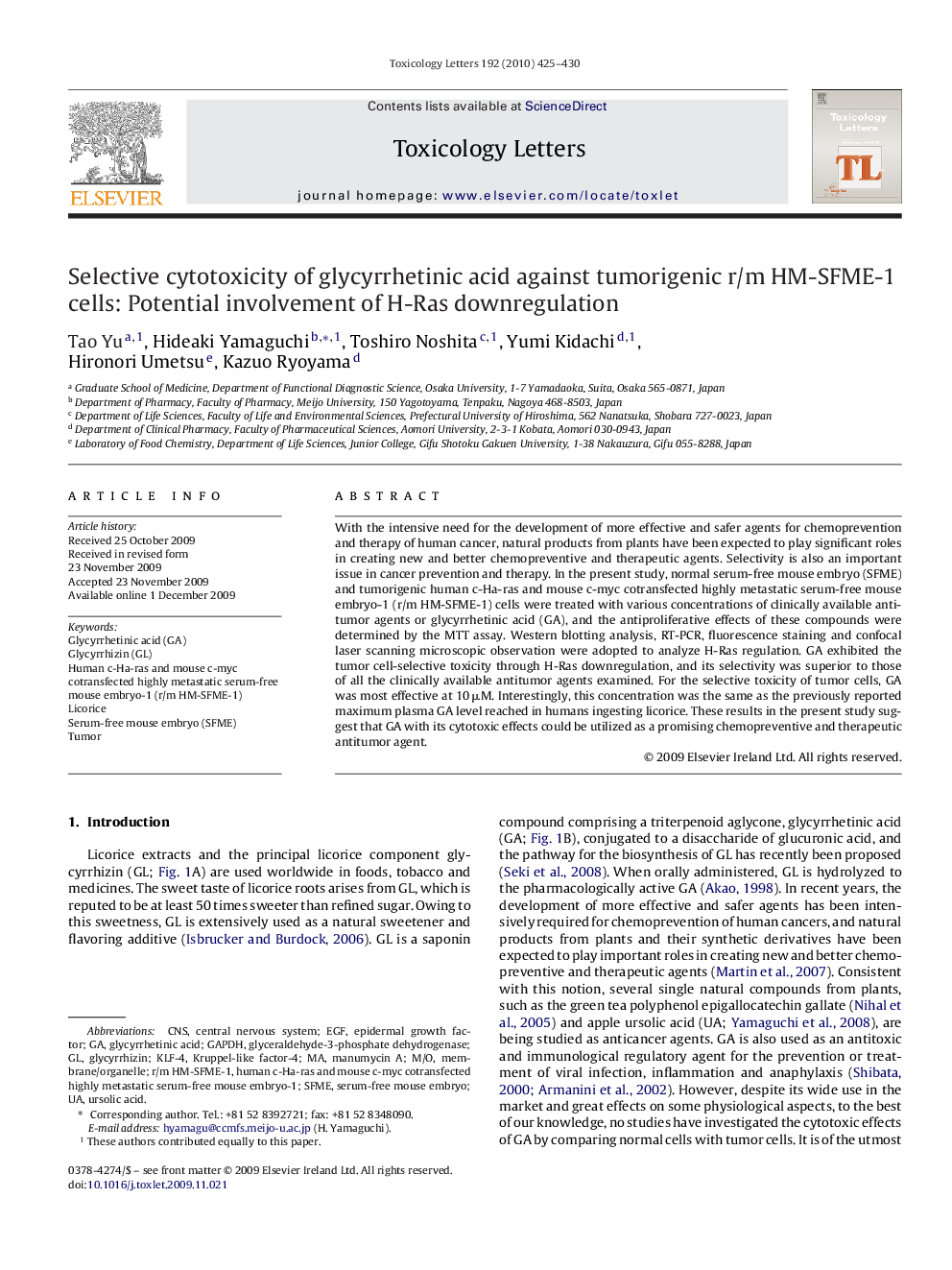| Article ID | Journal | Published Year | Pages | File Type |
|---|---|---|---|---|
| 2600660 | Toxicology Letters | 2010 | 6 Pages |
With the intensive need for the development of more effective and safer agents for chemoprevention and therapy of human cancer, natural products from plants have been expected to play significant roles in creating new and better chemopreventive and therapeutic agents. Selectivity is also an important issue in cancer prevention and therapy. In the present study, normal serum-free mouse embryo (SFME) and tumorigenic human c-Ha-ras and mouse c-myc cotransfected highly metastatic serum-free mouse embryo-1 (r/m HM-SFME-1) cells were treated with various concentrations of clinically available antitumor agents or glycyrrhetinic acid (GA), and the antiproliferative effects of these compounds were determined by the MTT assay. Western blotting analysis, RT-PCR, fluorescence staining and confocal laser scanning microscopic observation were adopted to analyze H-Ras regulation. GA exhibited the tumor cell-selective toxicity through H-Ras downregulation, and its selectivity was superior to those of all the clinically available antitumor agents examined. For the selective toxicity of tumor cells, GA was most effective at 10 μM. Interestingly, this concentration was the same as the previously reported maximum plasma GA level reached in humans ingesting licorice. These results in the present study suggest that GA with its cytotoxic effects could be utilized as a promising chemopreventive and therapeutic antitumor agent.
